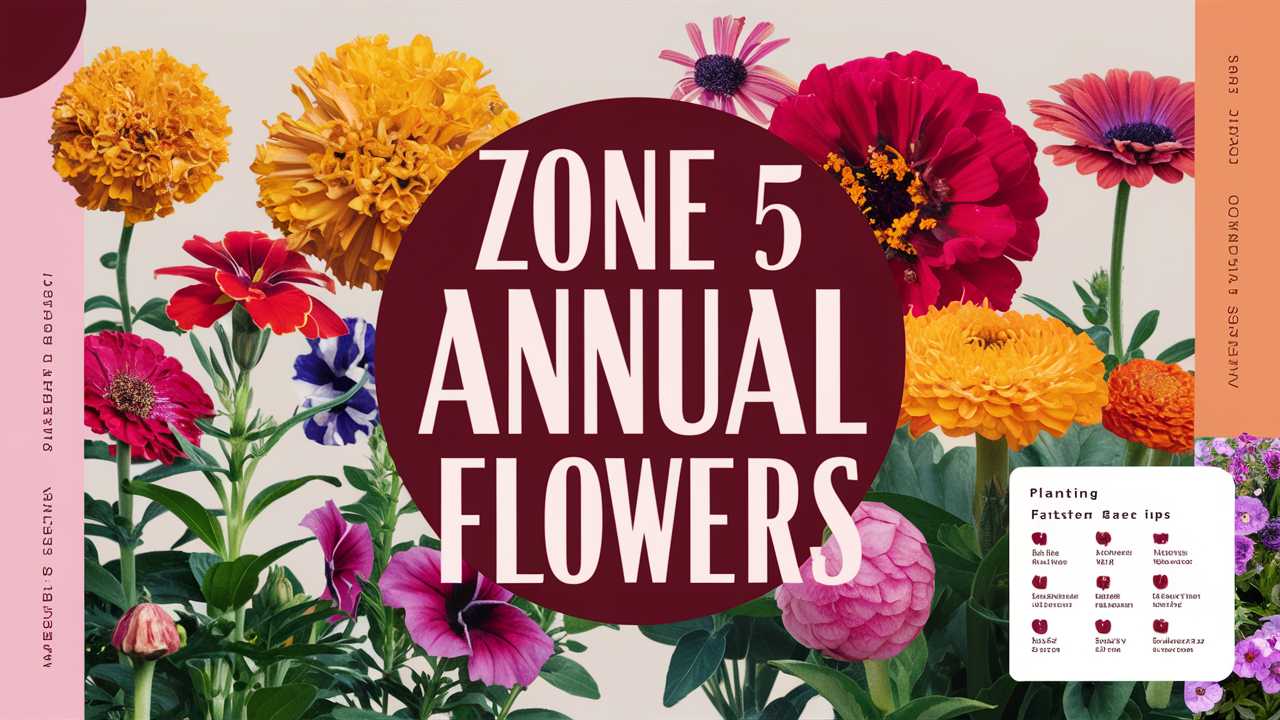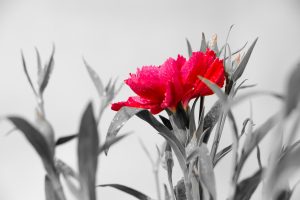In this blog post, we’ll explore stunning annual flowers perfectly suited for Zone 5, each with its unique charm, care requirements, and design potential.
Marigold
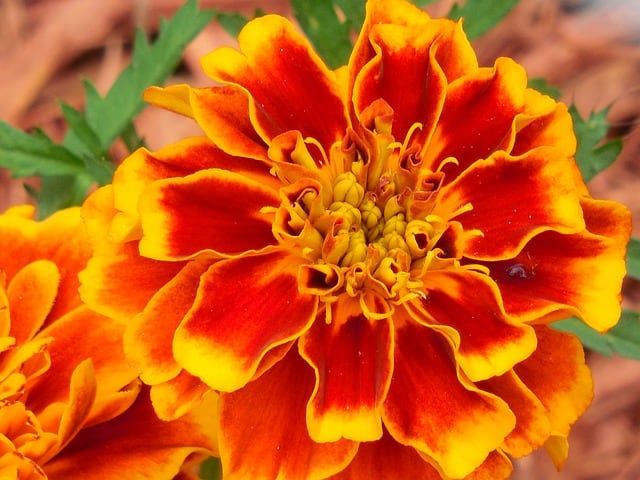
Marigolds are a classic choice for any garden, boasting bright orange and yellow blooms that can brighten up any landscape. These cheerful annuals are not only visually appealing but also serve practical purposes. Their strong scent can deter pests, making them a fantastic companion plant in vegetable gardens. Marigolds thrive in full sun, requiring well-drained soil, and bloom from late spring through the first frost, providing a long-lasting show.
When planting marigolds, consider using them in borders or as spot color in your flower beds. They pair beautifully with a range of other flowers, creating a stunning tapestry of color. Plus, they are effortless to grow from seed, making them a great choice for beginner gardeners.
Zinnia
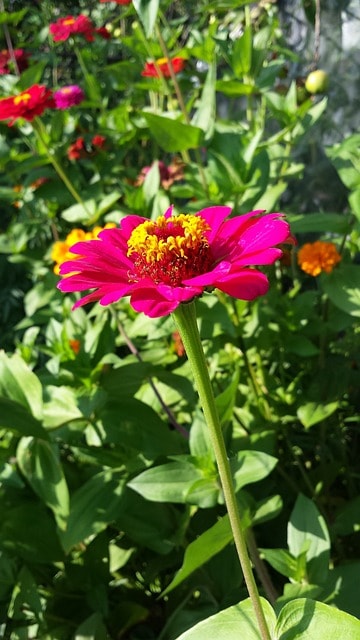
Zinnias are a garden favorite with their large, daisy-like blooms that come in a rainbow of colors. Coming in various sizes, from dwarf varieties to towering specimens, zinnias can suit any garden style. They thrive in full sun and prefer well-drained, slightly acidic to neutral soil. Regular deadheading promotes continuous blooming, making them ideal for summer-long splendor.
These plants also attract pollinators such as butterflies and bees, contributing to a vibrant, buzzing garden ecosystem. Zinnias are perfect for cutting gardens, as their sturdy stems hold up well in vases, making them a dazzling addition to indoor arrangements.
Petunia
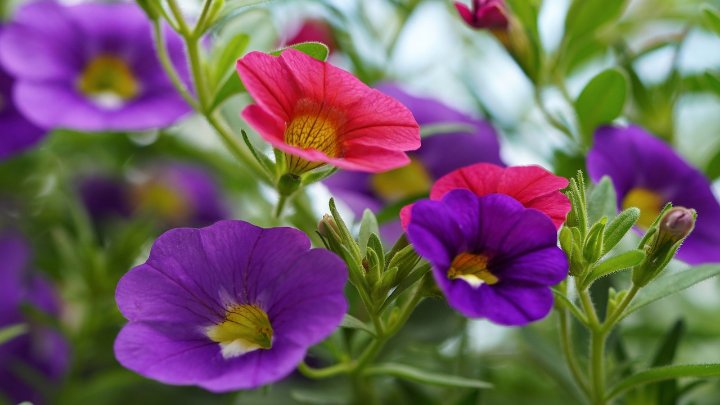
Petunias are another perennial favorite in Zone 5, known for their captivating colors and sweet fragrance. They come in various forms such as trailing, upright, and even wave varieties, allowing versatility in how you display them. Petunias flourish in full sun and do best in well-draining soil, appreciated for their abundant flowering that lasts all summer long.
With their delightful blooms, petunias can be used in hanging baskets, window boxes, or as colorful ground covers. Additionally, they are available in single and double-flowered varieties, giving gardeners the option to mix and match for a personalized palette.
Cosmos

Cosmos are charming annuals that sway gracefully in the breeze, gracing your garden with ethereal flowers that dance on slender stems. Known for their daisy-like appearance, cosmos flourish in an array of colors, including pink, white, and deep crimson. They thrive in full sun and well-draining soil and are drought-resistant once established, making them relatively low-maintenance.
Ideal for cottage gardens or naturalized areas, cosmos attract pollinators and lend a casual charm to any landscape. Plant them in clusters for a delightful drift of color, and enjoy a steady stream of butterflies visiting your garden throughout the growing season.
Snapdragons
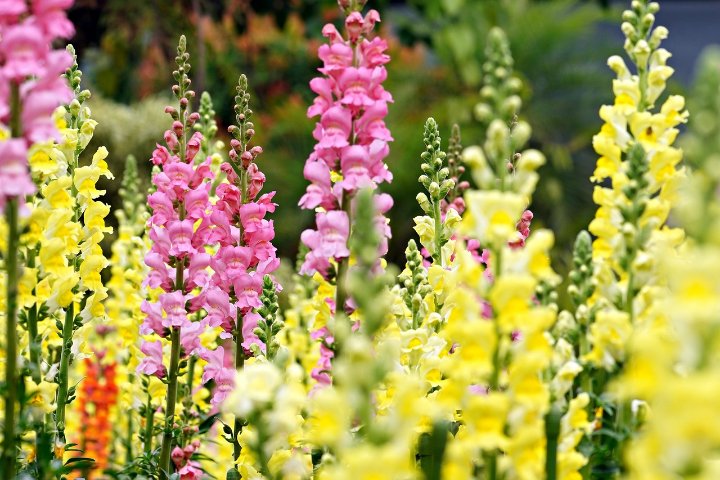
Snapdragons, also known as Antirrhinums, are beloved for their unique flower shape and vibrant hues ranging from soft pastels to bold, fiery colors. They can be an excellent choice for early summer gardening as they can withstand cooler temperatures. Snapdragons flourish best in full sun to partial shade and thrive in rich, well-drained soil.
One of the delightful attributes of snapdragons is their ability to ‘snap’ open and closed when gently pinched. This whimsical feature captivates both children and adults alike. Use snapdragons at the back of borders or in cutting gardens, where their tall stature can elevate any arrangement.
Geranium

Geraniums are iconic for their versatility and vibrant blooms, often found in gardens around the world. These cheerful flowers come in various shades, from deep reds to brilliant purples, appealing to diverse garden aesthetics. They do well in full sun to partial shade and prefer well-draining soil.
Geraniums can thrive in pots, making them perfect for patios aside from standard garden beds. Their trailing varieties work splendidly in hanging baskets, creating a cascading effect that draws the eye. Regular deadheading will keep them blooming throughout the season, ensuring spots of color in your garden from late spring to fall.
Lobelia
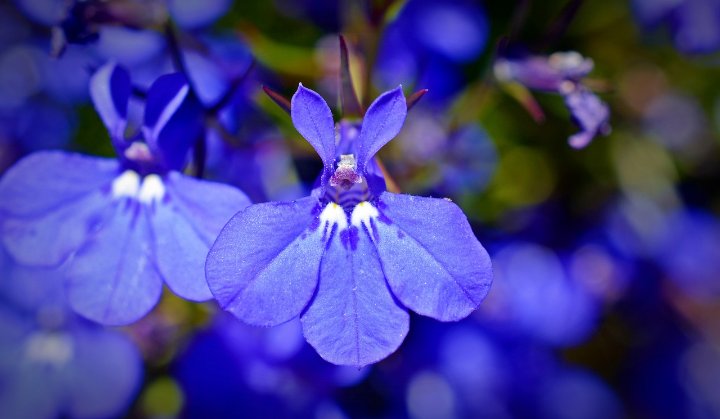
Lobelia is a dainty annual flower that adds a touch of elegance to any garden space. With finely textured foliage and profuse blue, violet, or white blooms, they create a beautiful contrast against larger flowers. Lobelia prefers cooler temperatures, thriving in partially sunny areas with moist, well-drained soil.
These flowers are ideal for adding depth and dimension to containers or window boxes. Their trailing habits make them perfect for cascading over the edges, creating a soft, romantic look. Plant them alongside taller flowers for an enticing garden design that draws the eye upward.
Sunflower

Sunflowers are perhaps one of the most iconic symbols of summer, instantly uplifting any garden with their large, cheerful faces brightened by sunlight. They come in various sizes and types, from giant sunflowers that can grow over six feet tall to dwarf varieties that are perfect for small spaces. Sunflowers thrive in full sun and require well-draining soil.
These stunning flowers do best with ample light and can handle the heat of summer. Aside from their beauty, they also attract pollinators, and birds will flock to their seeds in the fall. Consider planting a sunflower patch for a dramatic effect, or use them as a backdrop for shorter blooming plants.
Ageratum

Ageratum is a delightful low-growing annual that produces fluffy, feathery blooms in shades of blue, lavender, or white. This compact plant thrives in full sun to partial shade and prefers well-drained soil with consistent moisture. Its long bloom time from late spring till frost ensures that your garden remains vibrant.
Due to its small stature, ageratum makes an excellent choice for borders or as filler plants in flower beds. They can be particularly charming when combined with other taller plants for a varied texture and color palette. Their cut flowers are favored for arrangements too, providing softness to any indoor display.
Cleome
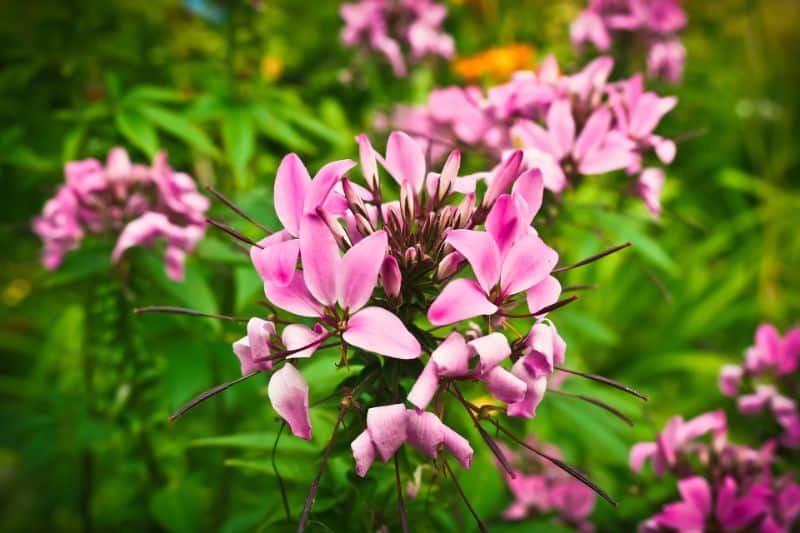
Cleome, or spider flower, is an eye-catching annual known for its tall, spiky growth and unique flower structure. With large clusters of pink, white, or lavender blossoms that resemble fireworks, cleomes not only add height to your garden but also create a vertical element that draws attention. They thrive best in full sun and well-drained soil.
These resilient plants are often overlooked but provide ample food for hummingbirds and butterflies, making them a wonderful addition to pollinator gardens. They can become quite large, so spacing is essential to allow them to breathe. Use cleomes at the back of borders or in cottage garden beds for dramatic summer style.
Nasturtium
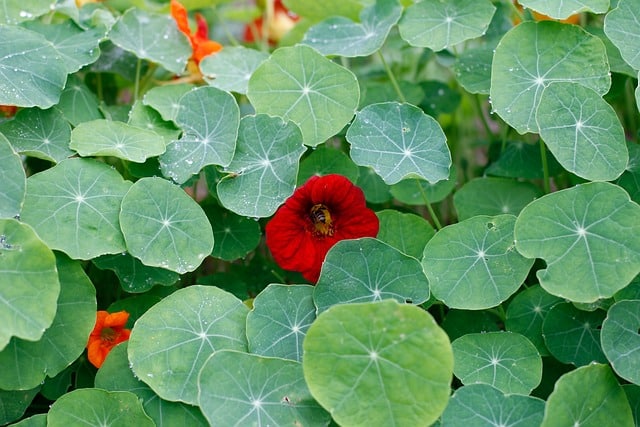
Nasturtiums are a brilliant choice if you’re looking for annual flowers that also serve culinary purposes. Their edible flowers come in a kaleidoscope of colors, with a peppery taste that can enhance salads and dishes. They thrive in full sun and tolerate poor soil conditions, which makes them ideal for gardeners with less-than-ideal growing environments.
Beyond the kitchen, nasturtiums excel in ornamental gardening, where their sprawling vines and vibrant blooms can dress fences, trellises, or hanging baskets. They are known for attracting beneficial insects and can brave dry spells, making them resilient plants for less predictable conditions.
Sunflower

Sunflowers, cherished for their sheer size and unique beauty, are a gardener’s delight. These striking flowers, often associated with happiness and positivity, grow robustly in full sunlight and can reach impressive heights. Sunflowers come in various varietals, ranging from miniatures suitable for container gardening to towering giants that make magnificent focal points.
Incorporating sunflowers into your garden not only brings visual interest but also encourages biodiversity by attracting pollinators. Allowing some to go to seed draws in birds during the fall, creating a dynamic and lively garden throughout the seasons. Planting sunflowers in clusters can provide a stunning display, ensuring that your garden remains a bright spot that visitors will admire.


